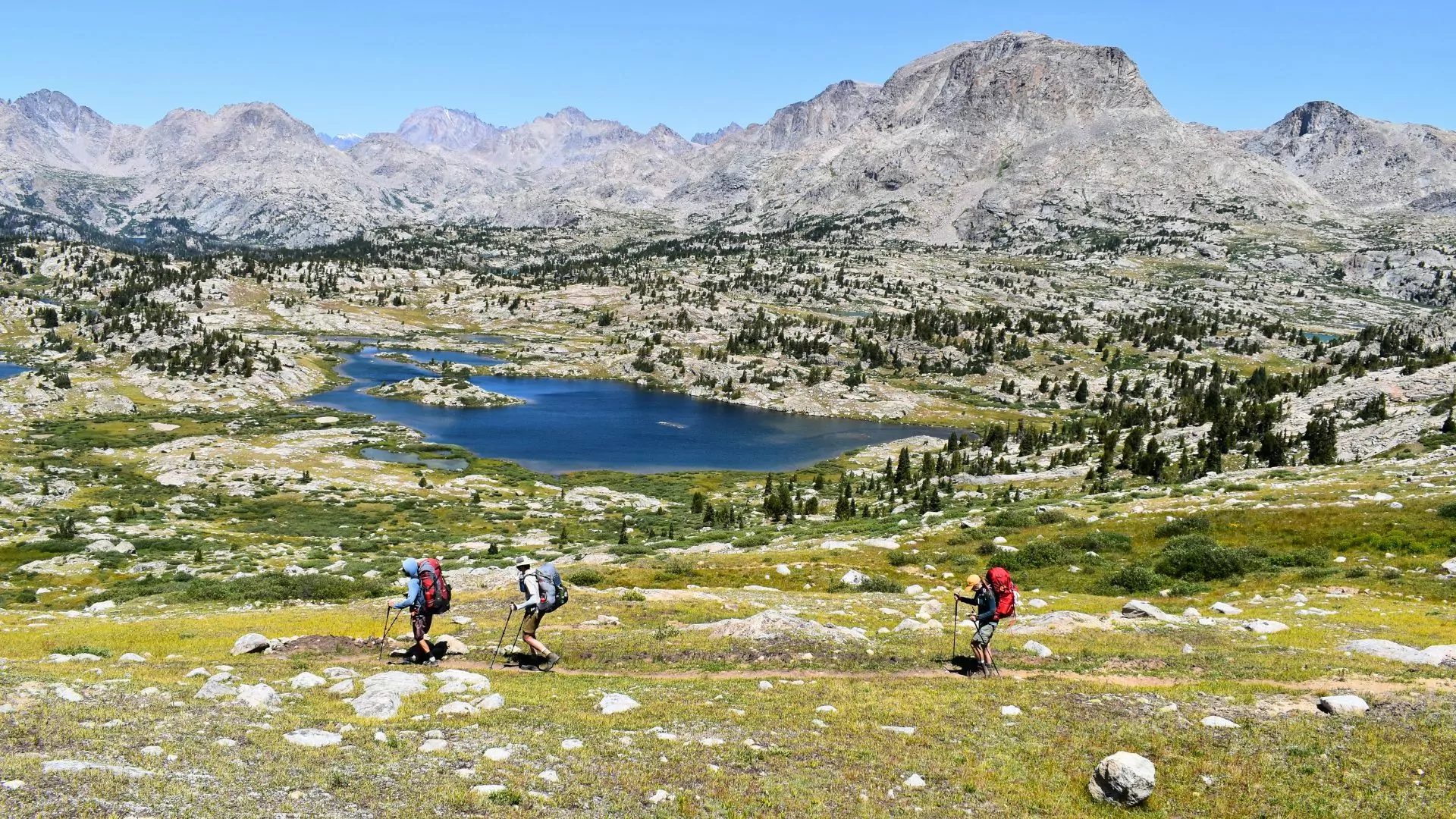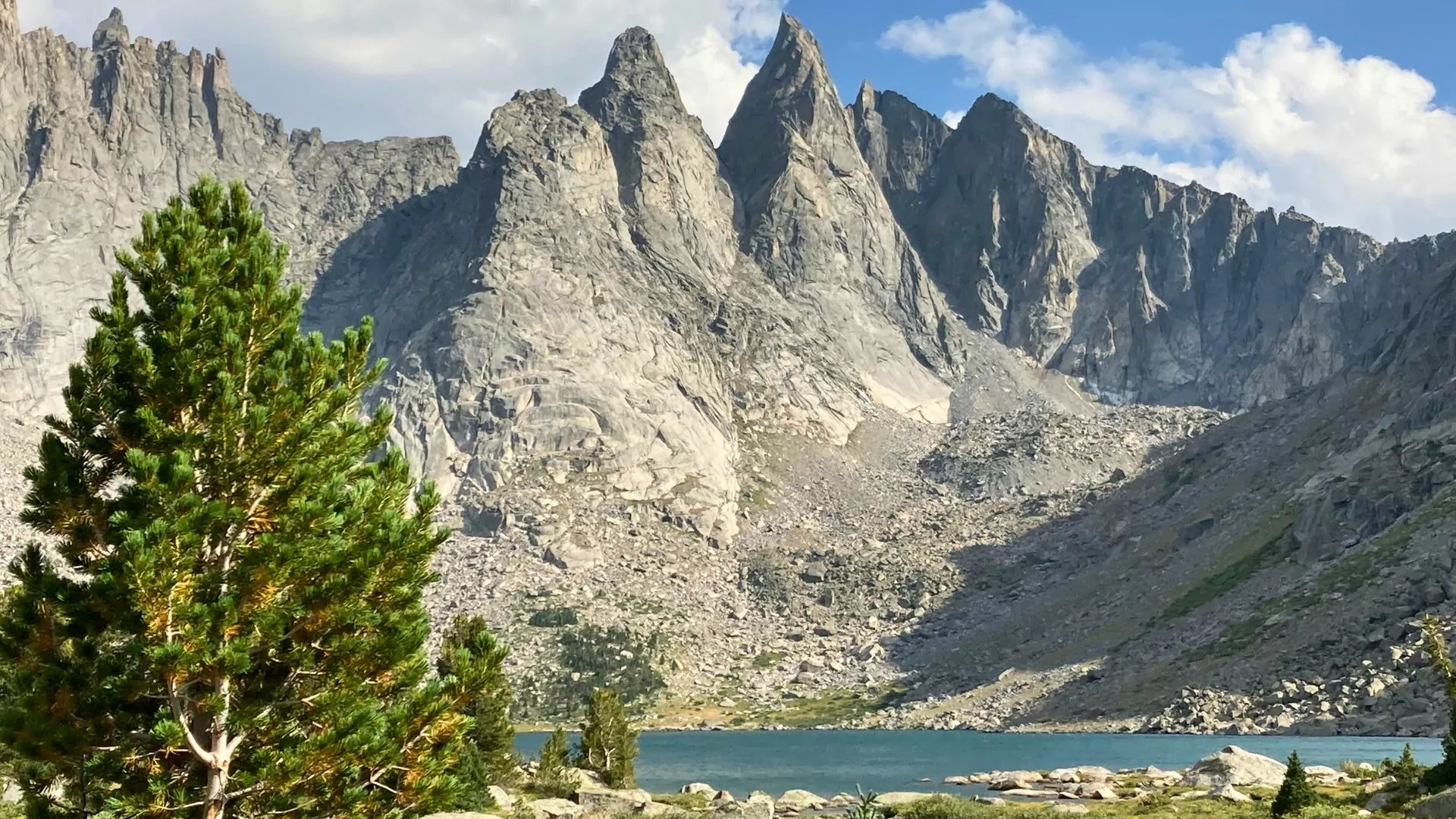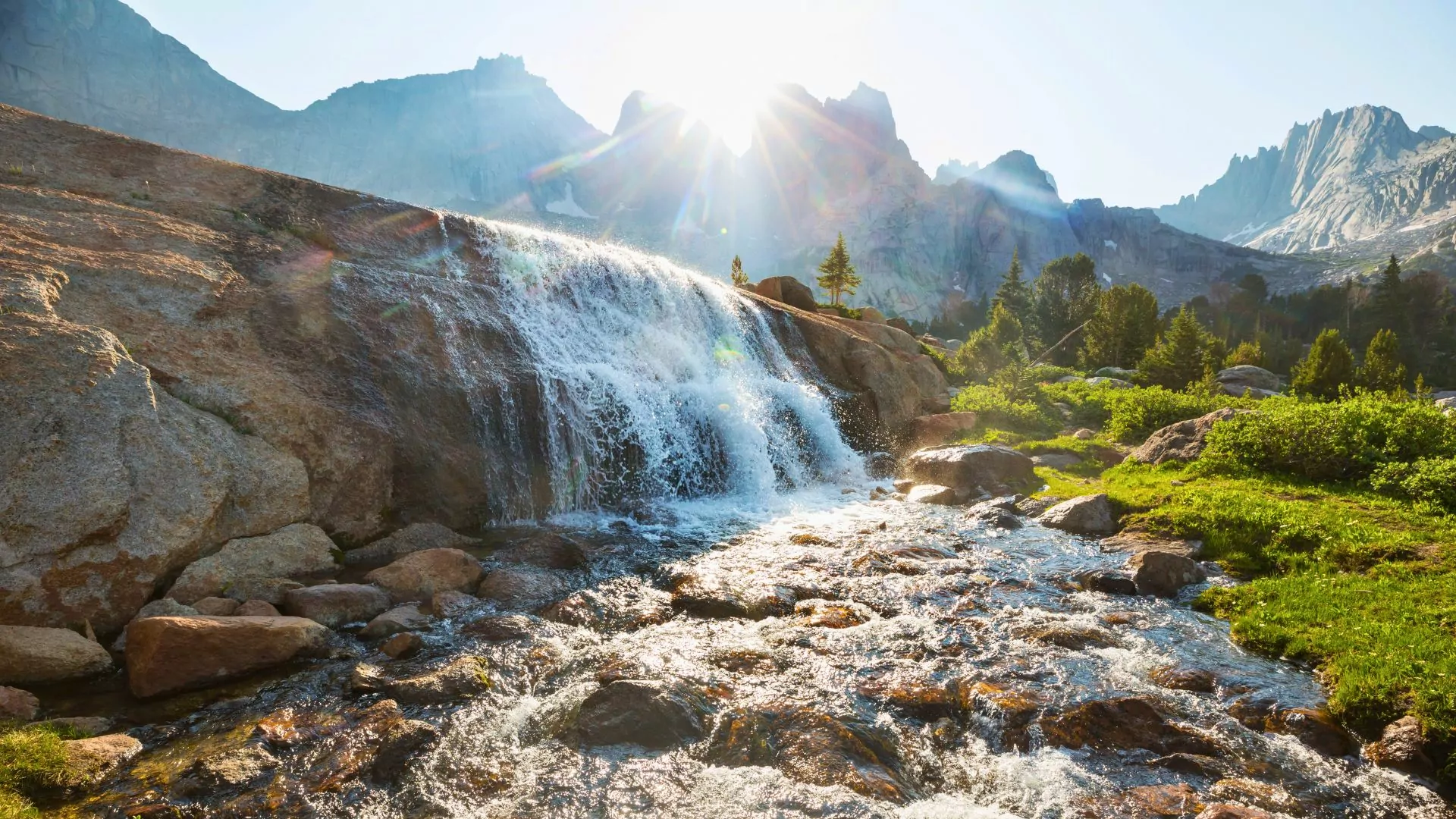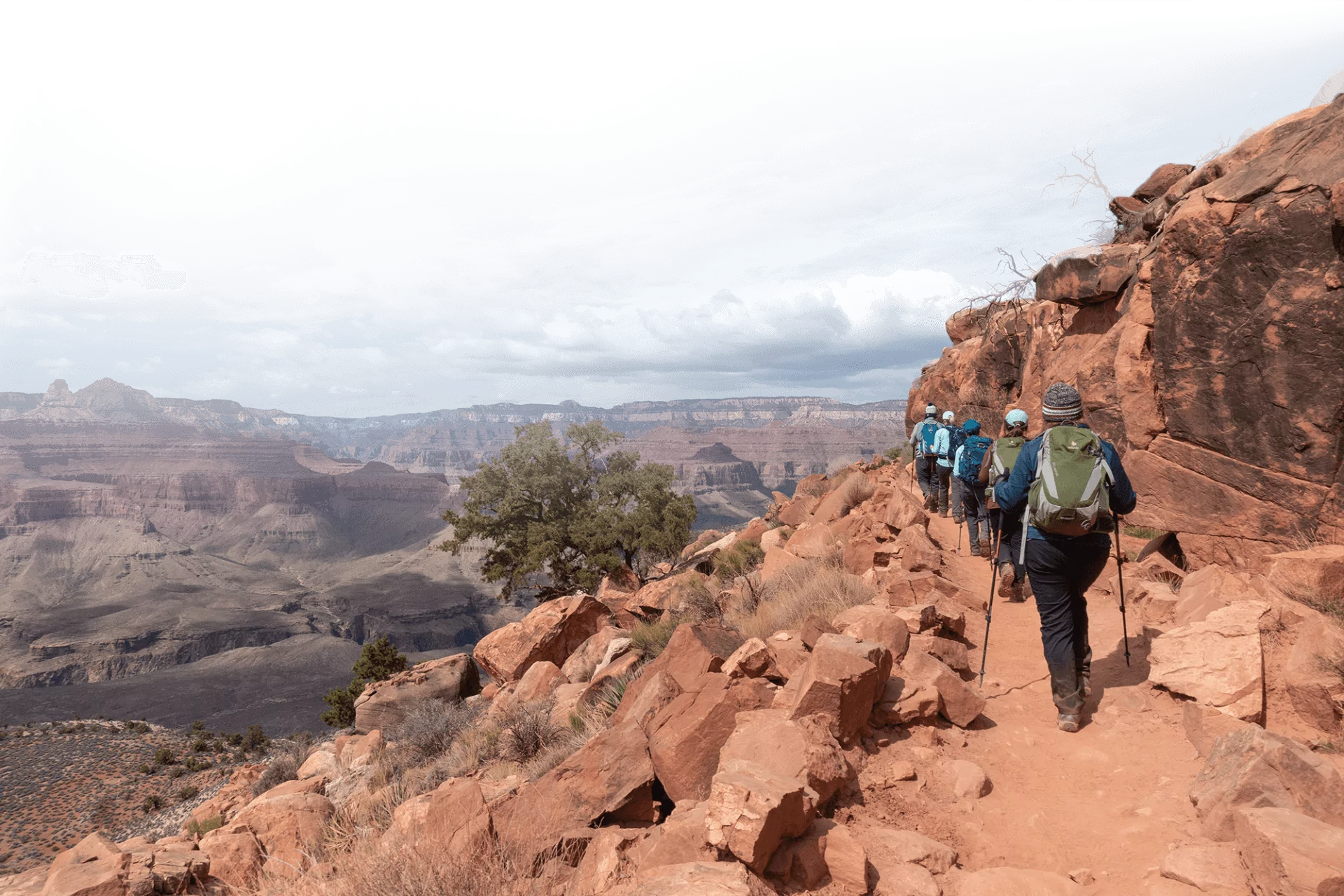Wind River Range Backpacking
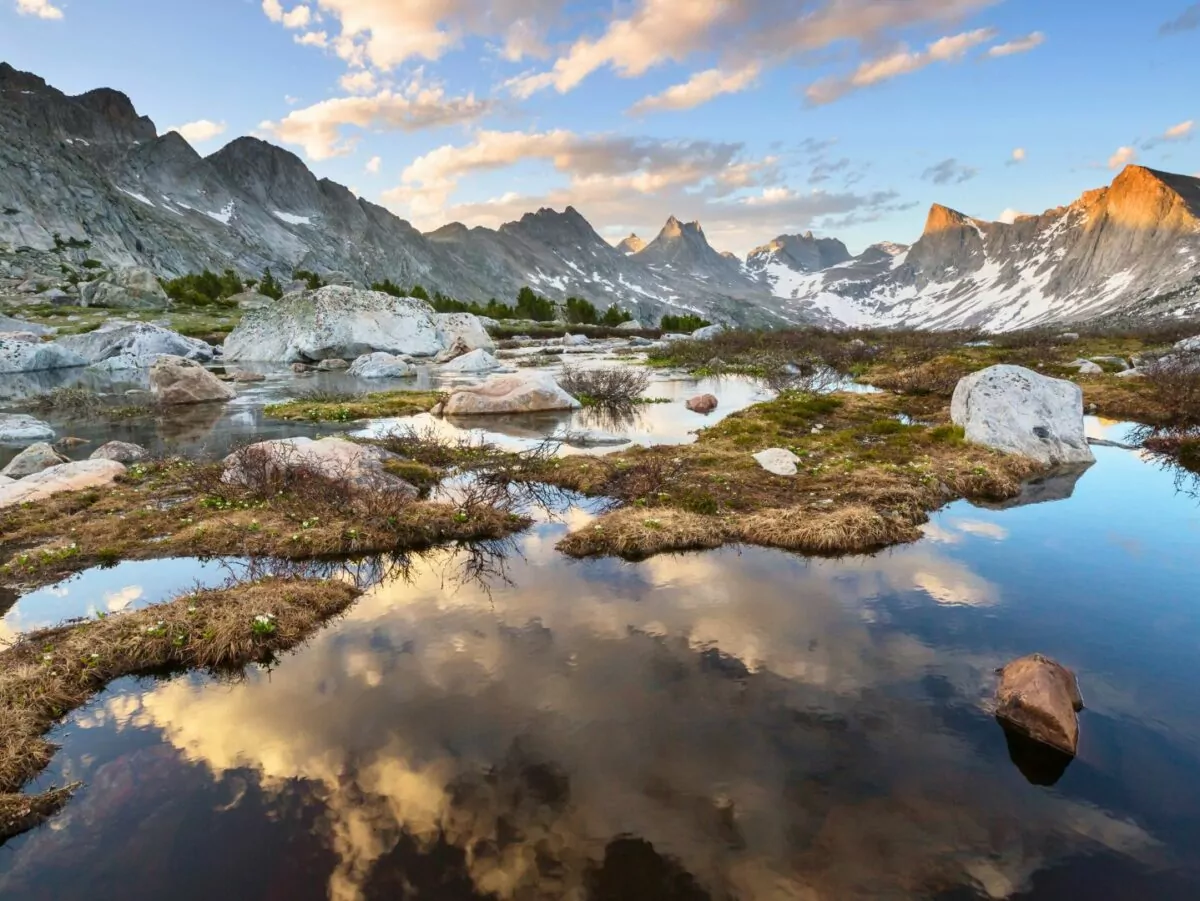
Jagged peaks with sheer, daunting aspects. Deep valleys carved by ancient glaciers—some still slowly grinding through rock and soil. Crisp alpine lakes so frigid they’ll make you gasp when you plunge in. Elk, grizzly bears, pikas, and bighorn sheep roaming freely through lush meadows. No rivers of milk and honey—but just about everything else you’d expect from a true wilderness.
This is the Wind River Range—a lesser-known and even more strikingly beautiful alternative to its famous neighbor, Grand Teton National Park, just 70 miles away. For those willing to venture into its untamed beauty, the reward is some of the world’s best backpacking.
Why the Wind River Range?
Tucked away in western Wyoming, the Wind River Range is one of the country’s most breathtaking yet underrated backpacking destinations. With over 2.25 million acres of national forest, 600 miles of trails, and some of the highest peaks in the Rockies (including Wyoming’s tallest, Gannett Peak), the Winds are a paradise for those seeking solitude, adventure, and world-class scenery.
In this guide, I’ll cover essential things to know before heading into the Winds, plus recommendations for loop hikes to help you make the most of your time here. Whether you’re looking for a leisurely outing or a challenging expedition, this guide will help you prepare for the wild and out-there world of Wind River Range backpacking. If all of this seems like a lot to take in, Wildland Trekking offers numerous Wind River Range backpacking excursions that make it easy to pick a route and go, no stress. You can even have your very own pack llama for the whole trip!
Take a llama trek in the wind river Mountains
Wind River Range Backpacking Routes
Wind River Range Backpacking Routes for Beginners
These Wind River Range backpacking routes are perfect for those new to backpacking or looking for a relaxed yet rewarding experience. They feature well-marked trails, minimal elevation gain, and stunning scenery, making them great introductions to the Winds.
Big Sandy Lake
Easy, ~10-12 miles round trip
Why go? One of the most accessible and rewarding short hikes in the Winds.
The Route: Starting from the Big Sandy Trailhead, this gradual, well-maintained trail follows a gurgling creek for miles. Passing through meadows full of wildflowers before reaching Big Sandy Lake—a gorgeous turquoise lake nestled beneath the towering peaks of the Continental Divide. Numerous campsites are available near Big Sandy Lake, but be sure to be 200 feet from the lake! Set up a base camp and head up Jackass Pass to get more views, lounge by Big Sandy all day, or head back to the trailhead the same way you came. You can even camp at Big Sandy Trailhead the night before or after you head out, just bring $7 for the camp fee and know it’s a first come, first served campground.
Highlights:
- Gentle trail with minimal elevation gain (about 600 feet)
- Stunning alpine lake with opportunities to explore beyond (such as the Cirque of the Towers for those wanting to extend their trek)
- Great for families, first-time backpackers, or a relaxed overnight trip
Green River Lakes Loop
Easy-Moderate, ~9-12 miles round trip
Why go? One of the most iconic views in Wyoming, featuring the stunning reflection of Squaretop Mountain in the clear waters of Green River Lake.
The Route: This gentle loop follows the Green River, passing right by the lake shore of Lower Green River Lake before arriving at Upper Green River Lake. The lower elevation and well-maintained trail make it one of the easiest multi-day hikes in the Winds. You can also camp at The Green River Lake Campground at the trailhead the night before or after your hike, making it a fairly straightforward backpack with a place to sleep in your tent right at the trailhead. Once at Upper Green River Lake you can travel as far as you like and find an established site nearby.
Highlights:
- One of the most accessible trailheads (reachable via a maintained dirt road).
- Abundant wildlife, including moose and bald eagles.
- Ideal for those who want a scenic, leisurely hike without major altitude challenges.
- Hike along the Continental Divide Trail. Watch out for CDT thru hikers, although you’ll probably smell them before you see them.
- Both of these beginner-friendly routes provide a perfect introduction to the Wind River Range, allowing hikers to experience breathtaking wilderness without committing to extreme distances or technical terrain.
Backpack Green River Lakes with a guide
Intermediate& AdvanceD Wind River Range Backpacking
For those seeking a bit more challenge without committing to extreme off-trail navigation or technical climbs, these intermediate routes provide world-class scenery, moderate distances, and some rougher terrain. Expect higher elevations, longer mileage, and a mix of well-maintained trails and more challenging passes. These trips require good fitness, backcountry experience, and proper planning.
Cirque of the Towers Loop
Moderate, ~24 miles, ~3-4 days
Why go? One of the most famous and stunning Wind River Range backpacking routes, featuring one of the crown jewels of the Winds, The Cirque of the Towers.
The Route: Starting at the Big Sandy Trailhead, this loop passes by the Cirque of the Towers. A spectacular amphitheater of unique granite peaks. The standard loop passes Big Sandy Lake, up Jackass Pass to Lonesome Lake. From there either head back the way you came or take the more challenging detour over Texas Pass, then follow the Shadow Lake Trail to the Continental Divide Trail and head south back to Big Sandy Trailhead. Camping opportunities abound, but make sure to watch out for signage on campsite boundaries.
Highlights:
- The Cirque of the Towers. This is one of the most scenic and unique formations of the planet. Hard stop. Each peak has a distinctive profile and offers hours of staring at tasty rocks. Hike over to Cirque Lake to stand right in the middle of the amphitheater.
- Some scrambling required over Texas Pass, adding a challenge for those looking to push their limits.
- Well-traveled but still remote—expect some solitude, especially outside peak season, but you can usually find others to camp near if you’re worried about camping alone.
- This iconic trek is also available as a guided llama trek with Wildland Trekking!
Titcomb Basin via Elkhart Park
Strenuous, ~30 miles out and back or ~50mi as a loop, ~4-7 days
Why go? One of the best Wind River Range backpacking routes for those looking to experience a path less travelled. Get DEEP in the backcountry of this Range and experience the majesty of Titcomb Basin.
The Route: Beginning at Pole Creek Trailhead, the trail winds through Miller Park, a scenic alpine meadow, before passing dozens of pristine lakes, including Seneca Lake. The route then climbs to Massive Island Lake before reaching Titcomb Basin, a breathtaking valley framed by 13,000-foot peaks and glaciers. From there you can either go back the way you came, making it a roughly 30 mile out and back, or head north at the Seneca Lake junction and make a loop. The loop passes seemingly endless lakes, including Lost Lake, Lower Jean, Elbow, Barum, and Long Lake. While less technical than more advanced routes, this trek demands stamina and careful planning due to its distance and elevation gain.
Highlights:
- Great fishing opportunities in lakes along the way (Island Lake, Seneca Lake).
- A popular launching point for mountaineering (many climbers use this route to access Gannett Peak).
- Though challenging, it’s not overly technical, making it a great trek for experienced backpackers looking for a longer adventure without off-trail navigation.
- This stunning route is also available as a guided llama trek with Wildland Trekking!
Know Before You Go:
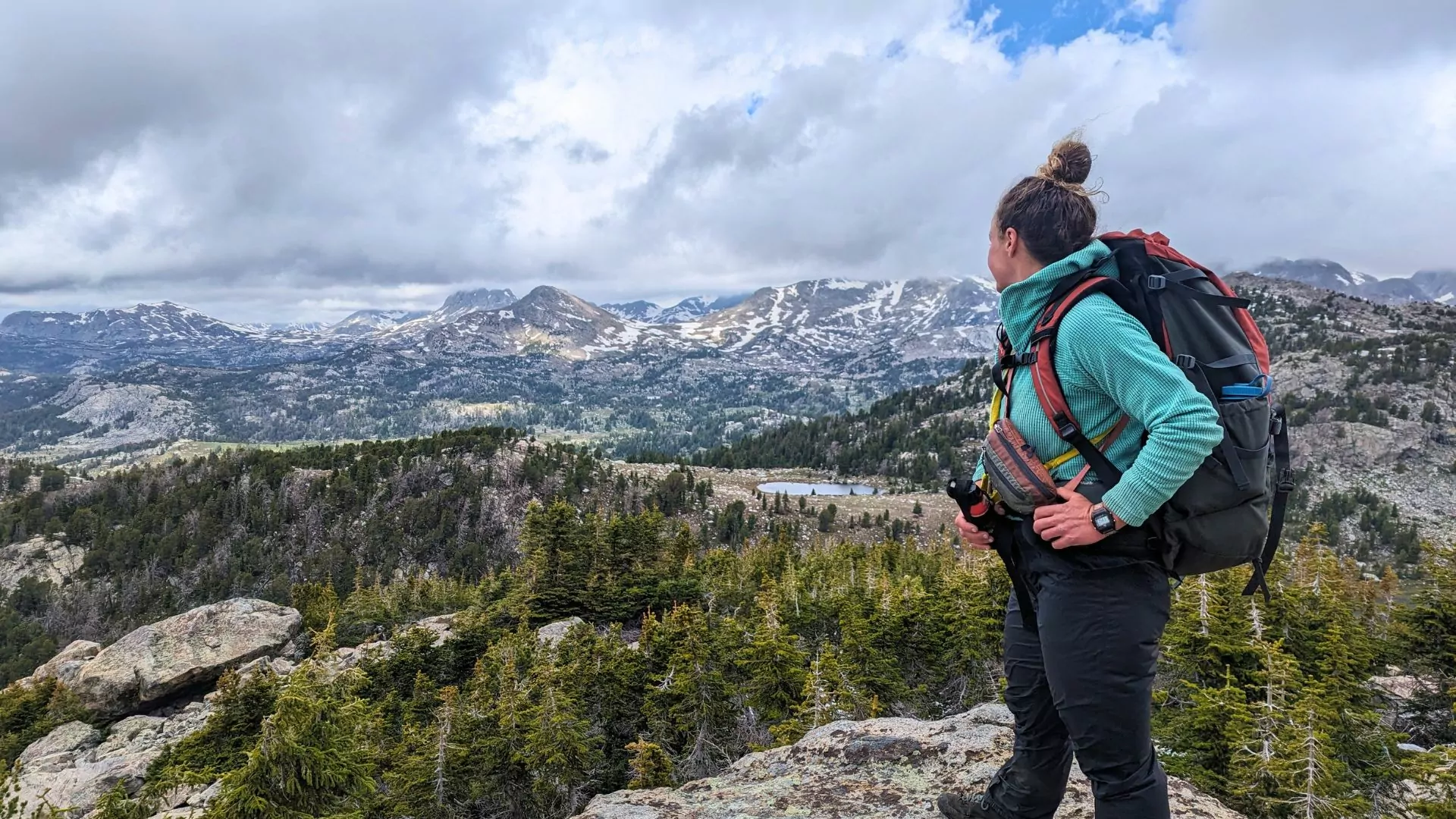 There’s a reason the Wind River Range sees fewer visitors than Grand Teton National Park: it’s harder to reach, tougher to navigate, and requires more preparation. However, once you’re there, it’s worth every drop of sweat.
There’s a reason the Wind River Range sees fewer visitors than Grand Teton National Park: it’s harder to reach, tougher to navigate, and requires more preparation. However, once you’re there, it’s worth every drop of sweat.
Getting There
My first time in the Winds was accidental. I was hitchhiking from Washington to Denver and got picked up by a fellow Appalachian Trail thru hiker who invited me along on his three day backpacking trip in the Winds. Chances are you’re probably planning a little further in advance so you’ll have to think about how you’re getting there.
The closest airports are:
- Central Wyoming Regional (RIW) and Jackson Hole Airport (JAC) (2.5 to 4 hours from trailheads)
- Salt Lake City (SLC) (4 to 6 hours from trailheads)
Renting a high-clearance vehicle (and possibly one with 4WD) is recommended, as many trailheads require navigating rough dirt roads. Plan for a full day of travel on both ends of your trek if flying in.
Navigation is Key
Many trails are unmarked, and off-trail travel is common. Bring:
- A map, compass, and GPS
- The Ten Essentials
- Solid navigation skills, don’t rely on cell service!
Pick a Responsible Campsite
- Follow LNT’s Campsite Selection Guide
- While in the Winds you must be minimum 200ft from any lake shore, and 100ft from any trail, stream, or creek.
- Some sites require to be even further if they’re a fragile ecosystem. Research your campsite in advance and follow any signage posted in the backcountry.
- Campfires are prohibited above treeline, which varies depending on where you are in the range. NEVER establish new fire rings and always follow signage for campfire prohibition.
Best Times to Visit
- Early season (June-July): High water crossings and mosquitoes. Some late snow pack potential
- Mid-season (August): Ideal conditions typically. Expect more traffic
- Late season (September-early October): Fall colors, fewer crowds, higher risk of early season snowstorms
Unpredictable Weather
The Winds are notorious for rapid weather changes. Expect:
- Afternoon thunderstorms are common in the summer. Expect a bluebird day to quickly descend into hail, lightning, and sudden temperature drops
- Snowstorms are known to occur year round if conditions are not in your favor. I’ve seen brutal winter storms roll through in August!
- Temperature swings from the 80s during the day to below freezing at night
Always check the weather forecast before losing service, and pack layers for any condition you have even a small chance of seeing in the backcountry. You’re out there in the Winds, so don’t expect to just hike out if things get hairy.
Wildlife
- Grizzly bears roam the area (rare, but possible encounters) so carry bear spray and know how to use it
- Bring a bear can and store food properly inside it. Protecting bears is a serious responsibility for recreation in the Winds and anywhere they roam. Bear cans are technically not required, but at high elevations finding a tree tall enough for a bear hang can be near impossible.
- Keep your eyes open for elk, bighorn sheep, marmots, pika, moose, and bigfoot. Be sure to keep your distance and follow Leave No Trace Principles to keep this area as beautiful as you found it.
High Altitude Challenges
Many trails exceed 10,000 feet, which can lead to altitude sickness. To prevent AMS:
- Acclimate before your trek (spend a night at 7,000+ feet if possible)
- Stay hydrated and take it slow
- Recognize AMS symptoms: headache, dizziness, nausea, and fatigue
Tough Terrain
The Winds offer everything from sandy tracks to exposed scree fields. Be prepared for:
- Steep climbs and high passes (e.g., Knapsack Col, Texas Pass)
- River crossings—especially in early summer when snowmelt is high
- Scrambling over loose rock in some areas
- Possibility of late season snow on steep terrain
Research your route, know your risk tolerance, and be ready to pivot if conditions change.
Bug Season is Brutal
From late June to mid-August, mosquitoes descend in full force. To stay sane:
- Pack DEET or Picaridin-based repellent
- Wear long sleeves and pants in the evenings
- Bring a head net (trust me, you’ll thank yourself)
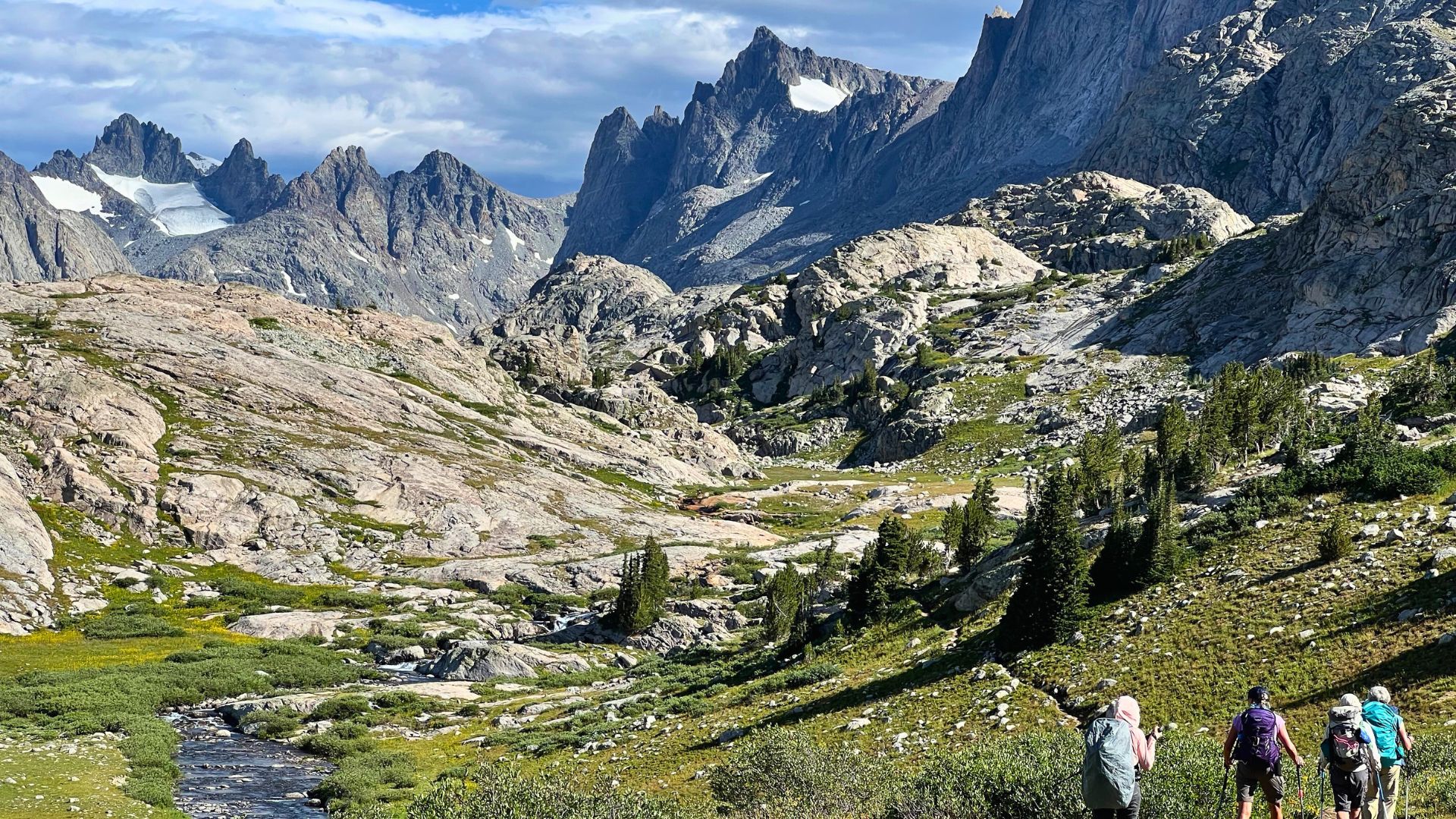
Bringing it Home
Wind River Range backpacking is an experience like no other—a true test of endurance, preparation, and appreciation for raw wilderness. Whether you’re taking a leisurely hike to Big Sandy Lake, exploring the legendary Cirque of the Towers, or pushing your limits deep in Titcomb Basin, I genuinely cannot express enough how exciting and unique this area is to explore.
Wind River Range backpacking demands self-sufficiency and rewards those who embrace its challenges. With unpredictable weather, remote terrain, and stunning high-altitude landscapes, every trek into this backcountry is an adventure in itself. Whether you’re planning your first backpacking trip or looking for a guided experience, the Winds will leave you with unforgettable memories, stunning views, and a deep respect for one of the last truly wild places in the Rockies.



